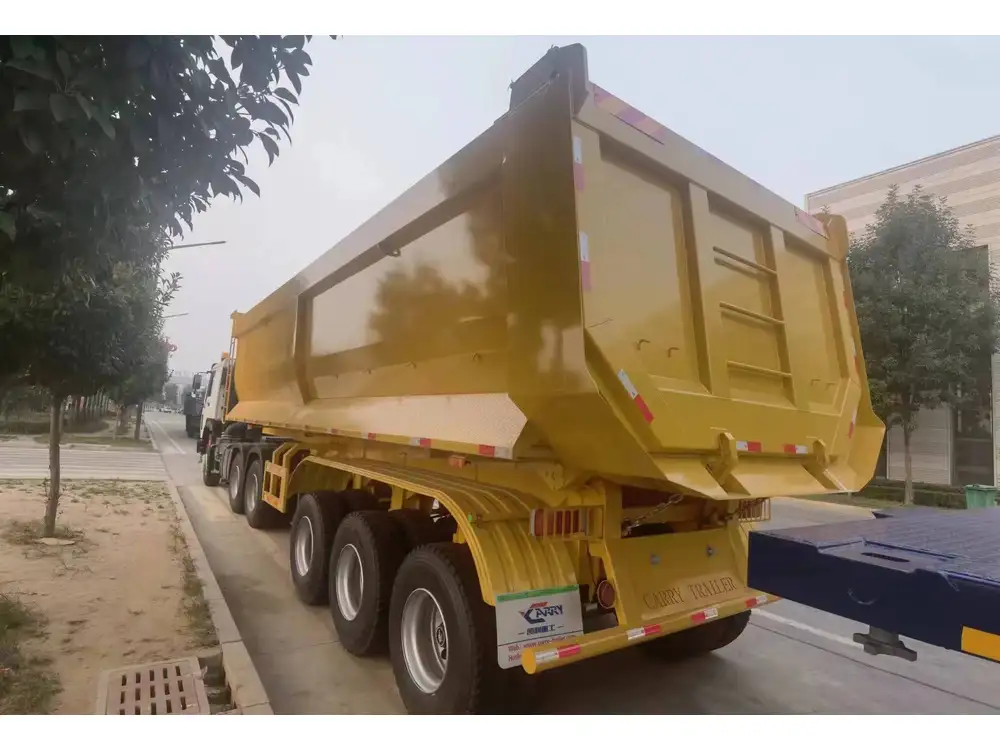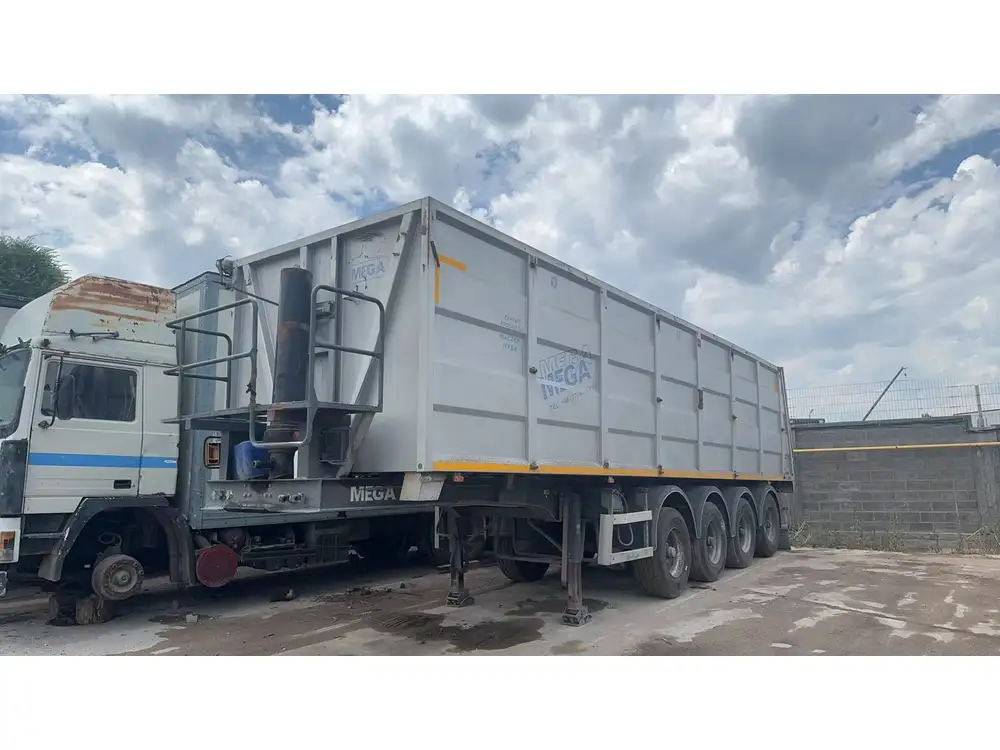Transporting goods efficiently requires more than just a means of transport. The way weight is distributed on a semi-trailer plays a critical role in ensuring safety, efficiency, and compliance with regulations. In this guide, we will delve deep into the intricacies of weight movement on semi-trailers, providing valuable insights, techniques, and strategies to optimize your load for successful transport.
Understanding Weight Distribution
The Basics of Weight Distribution
Weight distribution refers to how the cargo weight is spread across the axles and the total length of the trailer. Effective weight distribution ensures that:
- Safety: Enhanced stability during transit reduces the risk of accidents.
- Legal Compliance: Adherence to load restrictions prevents fines and penalties.
- Load Integrity: Properly secured goods reduce damage and waste.

The Importance of Axle Weight Limits
Each semi-trailer has a specified weight limit per axle, indicated in the manufacturer’s specifications and state regulations. Exceeding these limits can lead to dangerous road conditions and possible braking failure. For example, the Federal Bridge Formula provides guidelines for maximum legal weights based on axle spacing.
| Axle Configuration | Maximum Weight (lbs) | Notes |
|---|---|---|
| Single Axle | 20,000 | Standard for most commercial use |
| Tandem Axle | 34,000 | Common for semi-trailers |
| Tri-Axle | 42,000 | Advanced configurations for heavy hauls |
| Spread Axle | 46,000 | Extended axle spread for stability |
Techniques for Proper Weight Movement
Step 1: Load Planning and Inspection

Load Types and Classifications
Before loading, it’s critical to identify the type of cargo being transported. Materials can be divided into the following categories:
- Loose Cargo: This includes bulk materials such as gravel or soil.
- Palettized Cargo: Goods that come on pallets, which simplify loading and unloading.
- Containers: Standardized cargo containers are commonly used for international shipping.
Tools for Planning
Utilizing software or tools designed for load planning can significantly enhance this process. Load calculators help determine optimal weight distribution across the trailer, taking factors like cargo dimensions and weight limits into account.
Step 2: Securing Your Load

Techniques for Securing Cargo
Secure your cargo using various methods, ensuring it remains in place during transport. Proven methods include:
- Straps and Tie-Downs: Utilize ratchet straps or cam buckle straps to secure loose cargo. The implementation of edge protectors can prevent strap damage.
- Shrink Wrapping: Enveloping palletized items in shrink wrap can keep them bound together.
- Block and Brace: For irregularly shaped cargo, consider using wooden blocks or bracing to stabilize and immobilize loads.
- Lashing: Lashing down over the top of cargo can help distribute weight and prevent movement.
Step 3: Load Placement
Centering the Load
Always aim to place heavier items toward the front of the trailer. A centered load improves vehicle stability. The general rule of thumb is to position at least 60% of the load’s weight on the front half of the trailer and 40% on the back.

Visual Representation of Load Distribution

Utilizing Weight Distribution Axles
When possible, leverage multi-axle trailers that allow you to spread weight more evenly. Take note of:
- Sliding Tandem Axles: Allows for adjustment of axle positions; shifting axles can help meet state load limit regulations.
- Air Ride Suspension: Provides cushioning and assists with leveling loads, retaining better weight distribution.
Common Mistakes to Avoid

Ignoring Manufacturer Guidelines
Always refer to the manufacturer guidelines for load limits and configurations. Not adhering to these recommendations may compromise vehicle integrity.
Overloading the Trailer
Although it may be tempting to maximize load capacity, overloading can cause trailers to exceed structural limits. This situation not only increases wear but drastically elevates the risk of catastrophic failures.
Neglecting Road Conditions and Weather
Road conditions directly impact how weight travels. During inclement weather or poor road conditions, it’s advisable to adjust speed and potentially lighten a load.

Regulatory Considerations
Federal and State Regulations
Driving with a semi-trailer requires a deep understanding of the legal landscape. Complying with the Department of Transportation regulations is essential for all transportation companies. Important regulatory points include:
- Weight Limits: Enforcement varies by state but must conform to federal guidelines.
- Vehicle Inspections: Regular inspections assure safety compliance and vehicle maintenance checks.
| Regulation | Details |
|---|---|
| Federal Bridge Formula | Establishes maximum weights based on axle spacing to prevent road damage. |
| State Highway Regulations | May impose different restrictions; drivers should familiarize themselves with specific state laws. |
| Annual Inspections | A mandate for commercial vehicles to ensure adherence to safety and operational standards. |
Best Practices for Transport Efficiency

Route Planning
Use GPS and mapping tools that allow for up-to-date route calculations that consider load restrictions, road grades, and traffic patterns. The smoother the road, the less strain on your trailer and load.
Weight Monitoring Systems
Consider integrating onboard weight monitoring systems that provide real-time data on load weight, ensuring you remain compliant throughout the journey.
Training Drivers
Invest in driver training focused on load management. Knowledge of weight distribution principles contributes not only to safety but also to a more economical driving style, minimizing wear and optimizing fuel efficiency.

Conclusion
In conclusion, moving weight successfully on semi-trailers is a multifaceted procedure that requires considerable knowledge and attention to detail. By understanding weight distribution, employing proper loading techniques, and adhering to regulatory guidelines, drivers can ensure their cargo reaches its destination safely and efficiently. We are dedicated to assisting you in your quest for effective transport solutions, empowering you to make informed decisions that lead to prosperous outcomes.
Leverage these comprehensive practices to elevate your transport processes and prioritize safety, compliance, and efficiency every step of the way. Whether you’re hauling fragile goods or hefty machinery, the principles outlined in this guide will help ensure your load is secure and compliant, paving the way for greater operational success.



